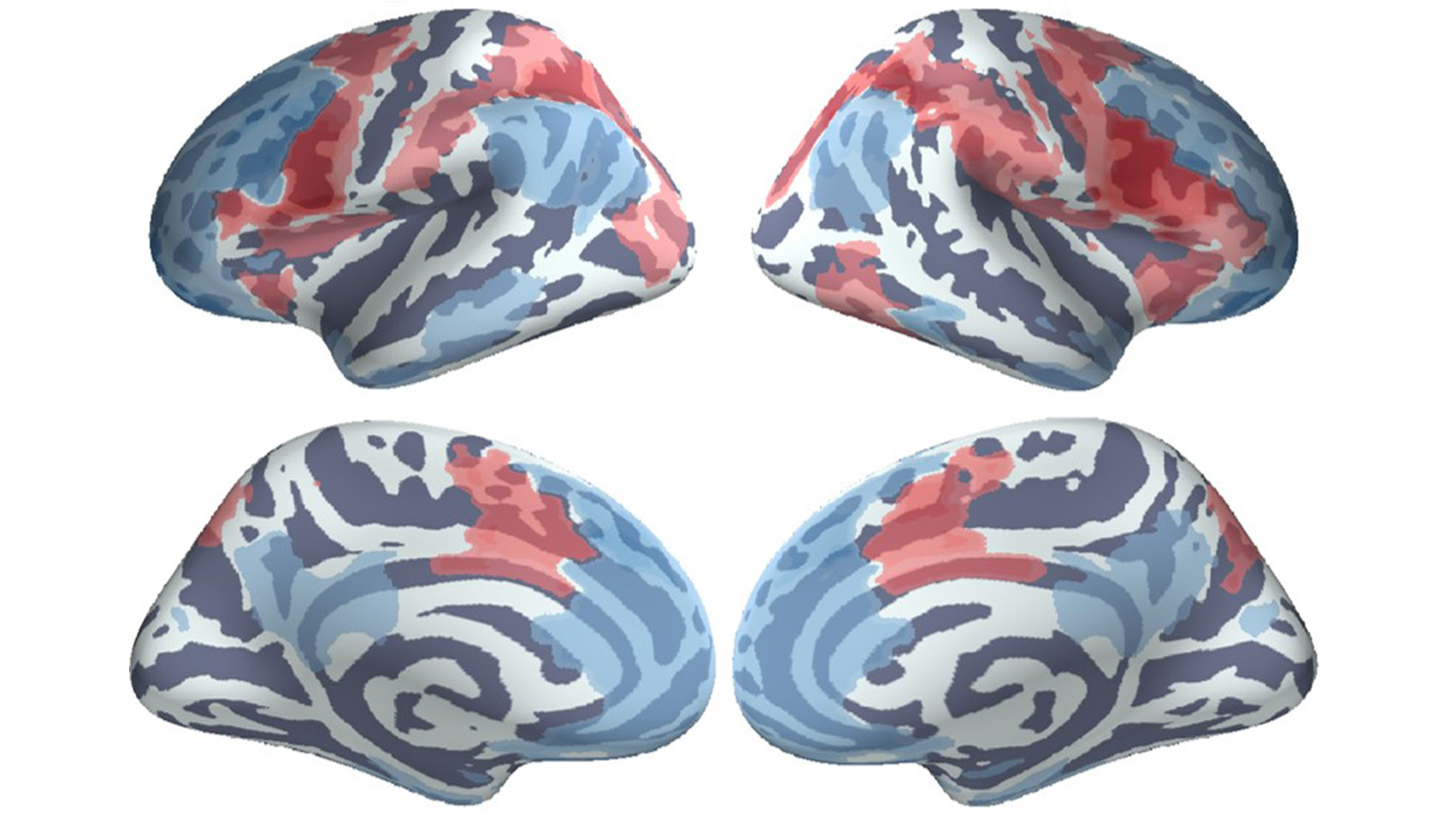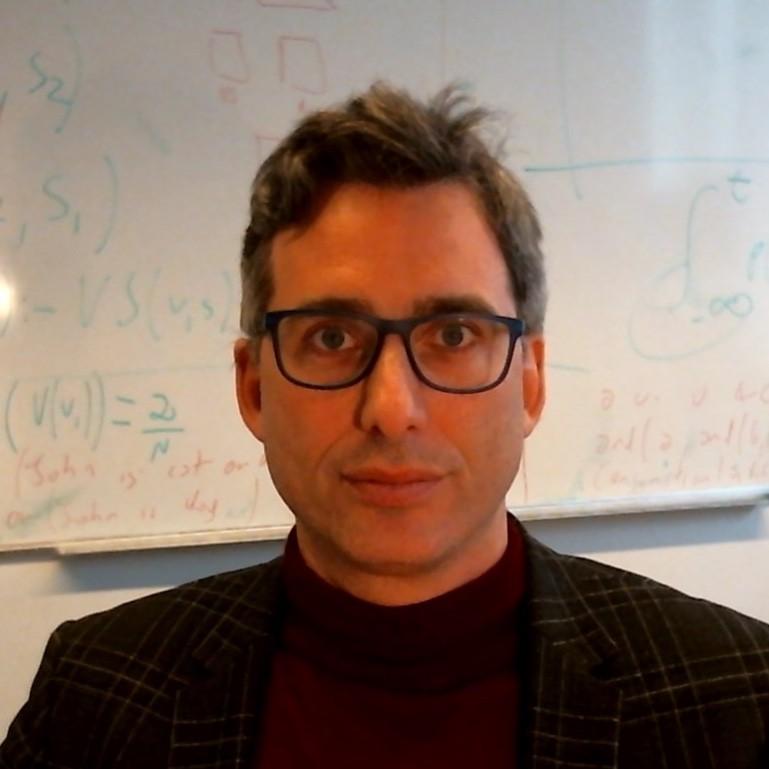
86 billion neurons. 150,000 billion synapses. 180,000 kilometres of nerve fibres. And information travelling faster than 400 kilometres an hour. One of the last great frontiers remaining in science, the human brain is a remarkably complex machine, and one we are only just starting to explore.
Over the past few years, functional magnetic resonance imaging (fMRI) has been used to begin mapping out the different regions of the brain and the specific cognitive functions associated with them. As a result of this progress in acquisition systems, a whole host of digital data has been gathered, providing neuroscience with a wealth of knowledge. What’s more, different studies are being combined in order to carry out what is known as meta-analysis. There is one snag, however: it is still difficult to make sense of this often heterogeneous, noisy or uncertain data. That’s where NeuroLang comes in.
The project began when Demian Wassermann, a researcher with the MIND project team at the Inria Saclay centre, had an intuition. “What we were unable to do was to express hypotheses and ask questions of data in a way close to natural language. There’s a gulf between our hypotheses, which humans formulate rhetorically, and a mathematical system which queries data in order to get a response.”
Changing a rhetorical question to a mathematical formulation
As a backdrop to this, a major cultural shift has been taking place. “Until now, when it came to appreciating the world, the history of human research was based on this rhetoric and hypotheses formulated in human language. By comparison, quantitative methods are extremely new. The problem is that they require a much more formalised approach.” When given a human rhetorical question, NeuroLang automatically provides a mathematical formulation in order to better answer the question.

Verbatim
Using a question and data, NeuroLang generates an algorithm that is actually a mathematical formulation in order to answer the question in a reasonable time. Provided there actually is an answer to the question, of course.
Researcher in MIND project-team
To help users to express their questions, this new language uses what is known as Controlled English. This is a sub-set of English with greater semantic clarity than natural rhetorical language, making it less open to interpretation. “Using this question and data, NeuroLang generates an algorithm that is actually a mathematical formulation in order to answer the question in a reasonable time. Provided there actually is an answer to the question, of course.”
In late 2017 the project got a significant boost when Demian Wassermann was awarded a grant by the European Research Council, after a highly selective process. “The ERC likes risky ideas and provides huge resources.” In this case, the amount granted was €1.5M, enough to fund six years of research. Six years down the line, NeuroLang has developed a good level of maturity. The results of the research recently featured in an article in Scientific Reports, a journal belonging to the Nature group. “The mathematical side of things took us a lot of time, but it works really well. We are currently carrying out intensive work on the interface to make it easier to use.”
NeuroLang used to study dyscalculia in children
The first users included scientists from Stanford University who Demian Wassermann has been working with for the past decade or so and whose area of focus is dyscalculia in children. They study to what extent cognitive training might be able to remedy this condition. Their goal is to determine whether or not a link can be established between the structure of a child’s brain and how sensitive they are to this cognitive training. Research seems to indicate that the more pronounced connections are between certain regions of a child’s brain, the greater the likelihood that cognitive training will reduce their dyscalculia.
When a neurologist is carrying out analysis and asks a question using this new language, the answer is never yes or no. “For qualitative questions, we want probability. To the question, ‘is your reading capacity better if your brain has this or that defining feature?’, we would not answer true or false, but rather we would say that there is an 80% chance that it is true.” To evaluate this level of certainty, NeuroLang employs the use of what you might call “classic” artificial intelligence techniques, which have been around in computer science for a long, long time.
But when it comes to answering quantitative questions, the researchers turn to more recent developments in machine learning. “This quantitative analysis will indicate, for example, that some of a patient’s cognitive faculties should fall by 30%. For this quantification we use deep learning networks.”
Helping neurosurgeons perform operations
This second part is still in development. It has given rise to a new project that is being funded by the French National Research Agency and coordinated in partnership with Assistance Publique – Hôpitaux de Paris (AP-HP - the Paris university hospital trust), more specifically the neurosurgery unit at Lariboisière hospital.
The idea behind this is “to help surgeons to choose the best route for accessing brain tumours. The operation can damage part of the brain. But the brain is quite plastic. It can relearn cognitive functions which are then rehoused in other parts of the brain. That said, we still don't know a great deal about this plasticity. Some functions seem more plastic than others, but we don’t know which, or what parts of the brain they’re in. Using NeuroLang, we are trying to develop a better understanding of this plasticity, thereby enabling surgeons to make a quantitative estimate of the likelihood of the patient regaining their cognitive capacities.”
And the story doesn't end there. “There is still a lot of research to be done, particularly when it comes to increasing the number of questions NeuroLang can answer.”
See also: Functional gradients in the human lateral prefrontal cortex revealed by a comprehensive coordinate-based meta-analysis, by Majd Abdallah, Gaston E Zanitti, Valentin Iovene and Demian Wassermann, in eLife, September 2022.
MIND - developing methods for use with neuroimaging data
Created in September 2023, MIND is an Inria project team that is a joint undertaking with the CEA and Université Paris-Saclay. It is partly a successor to the Parietal project team, and has four permanent members: Bertrand Thirion, Demian Wassermann, Thomas Moreau and Philippe Ciuciu, who heads up the team. A fifth permanent member, Chaithya Giliyar Radhakrishna, recruited through the CEA competition this summer, will join the team from November 2023.
The team’s core aim is to use artificial intelligence on large databases in order to develop a better understanding of how the brain works. “In neuroscience, like in other disciplines, we are in the middle of a paradigm shift. Instead of analysing small datasets and trying to draw major conclusions, researchers are now looking to work on extremely large datasets in order to get a clearer idea of the phenomenology under study”, explains Demian Wassermann.
MIND is one of the four research units which make up NeuroSpin, which is both a department of the Frédéric Joliot Life Science Institute at the CEA Paris-Saclay research centre, and a platform that is unique in Europe for high resolution, nuclear magnetic resonance neuroimaging machines. “We have access to the latest technology when it comes to measuring brain data. There are very few places in the world that have such a variety of systems for measuring brain activity, both human and animal. But it is more than just a technology platform. NeuroSpin features some of the most cutting-edge teams in cognitive science at an international level. Working in such a context means we are able to have fluid dialogue with teams operating at a really high level.”
Further information
- To be seen on figure : lCortical regions that are more likely to coactivate with a specific Fronto Parietal Cortical Network (FPCN) section than other. In blue, we depict regions exhibiting a greater probability of coactivation with FPCN-A. In red, we depict regions exhibiting a greater probability of coactivation with FPCN-B. These difference represent also different cognitive roles: the blue regions are involved when the brain is performing no special activity or at rest, in red ones when is charged with attention-centric tasks.
- To be read in eLife : Functional gradients in the human lateral prefrontal cortex revealed by a comprehensive coordinate-based meta-analysis, by Majd Abdallah, Gaston E Zanitti, Valentin Iovene et Demian Wassermann, dans eLife, september 2022.